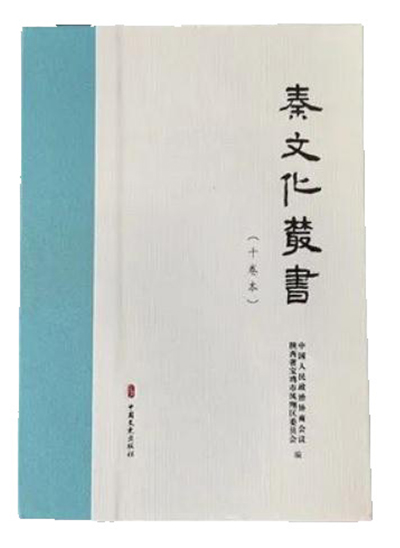A full view of Qin culture

A Collection of Qin Culture
A Collection of Qin Culture, written and compiled by ten scholars of Qin history, includes ten volumes respectively on history, geography, military affairs, important figures, systems, thoughts, literature, archaeology, allusions, and culture.
From the rise of the Qin State (770–221 BCE) to the collapse of the Qin Dynasty (221–207 BCE), the book selects ten angles to comprehensively and systematically introduce the arduous journey taken by the Qin people.
In 221 BCE, the King of Qin, Ying Zheng, completed the great cause of unifying China and established the first highly centralized “unified” authoritarian empire in Chinese history, which was a major event in Asian history and even world history. The Qin Dynasty had a normative influence on the political pattern in imperial China, although it ruled briefly and was overthrown by an armed uprising in 207 BCE.
The early Qin people once took animal husbandry as their main economic form. At first, the Qin people built animal husbandry bases in areas between the Qian River and the Wei River, contacted grassland tribes, and allied with the strength of the Western Rong groups. With its strength growing, the Qin people developed toward the east, became a western vassal state of the Zhou Dynasty (11th century–256 BCE) in 770 BCE, relocated its capital city to Yongcheng, and developed diplomatic and military relations with eastern vassal states.
Qin’s economic progress can be partly attributed to the mature farming experience from the “people left over as the King Ping of Zhou (750–720 BCE) migrated eastward.” Duke Mu of Qin (683–621 BCE) “annexed vast territory, defeated the strong Jin State in the east, and dominated the Rong and the Yi people in the west,” which was a political success achieved with the western Guanzhong [Central Shaanxi, located to the south of the Beishan Mountains and north of the Qinling Mountains] region as the basic base.
Technical considerations can explain the specific conditions for the Qin people to prosper and achieve unification. With advantages in water conservancy management, transportation construction, mechanical invention, power revolution, and other aspects, the Qin State enhanced its state power and became an irresistible factor in military competition. The progress of management and the popularization of iron tools also surpassed the six eastern states in the Warring States Period (476–221 BCE). Related to this, Qin’s academics and culture highlighted practical use.
Wang Zijin is a professor from the History School at Northwest University.
Edited by YANG LANLAN
